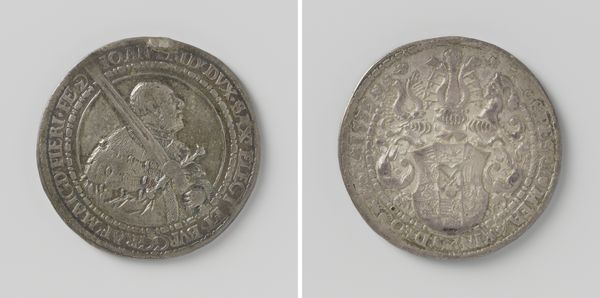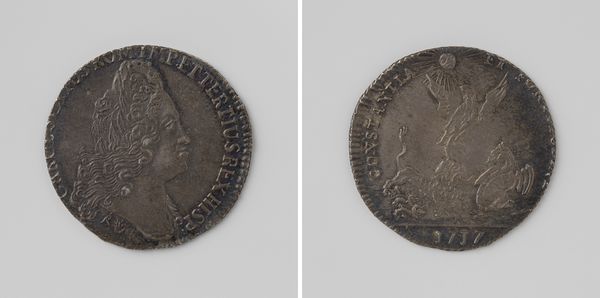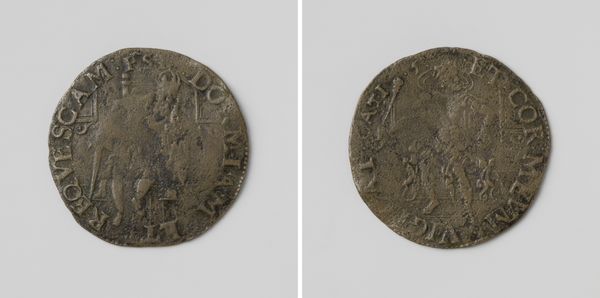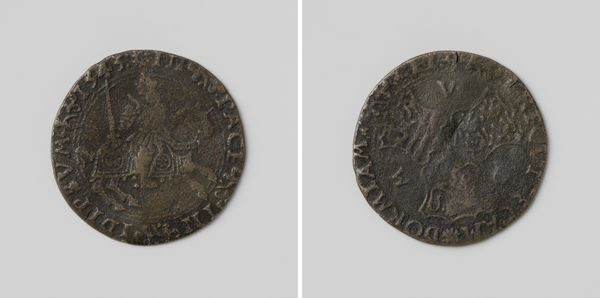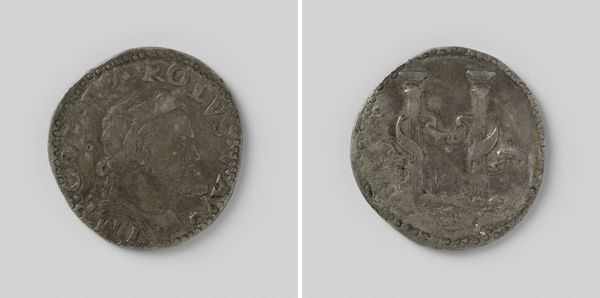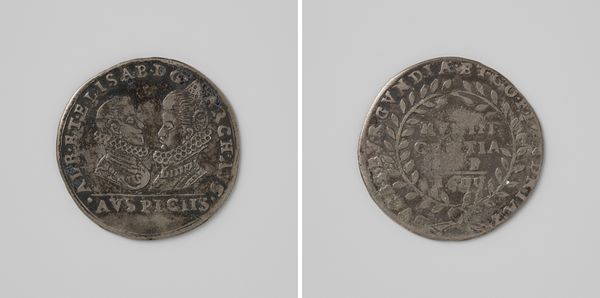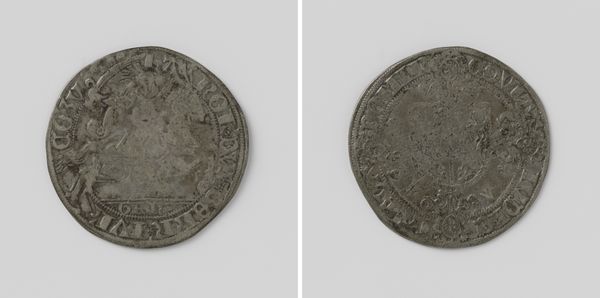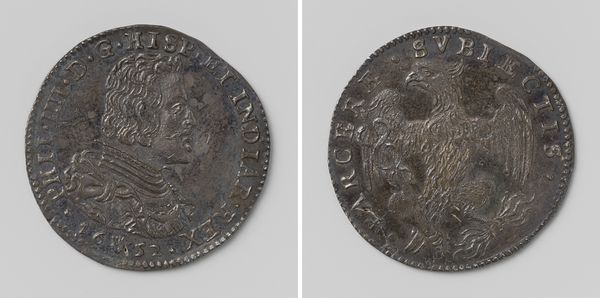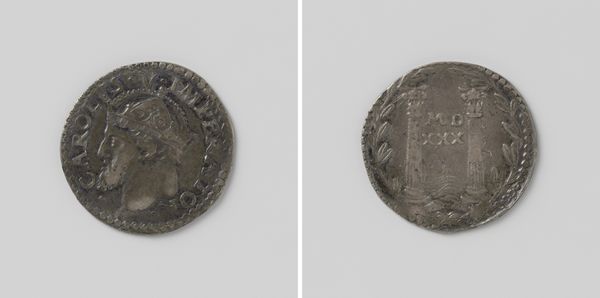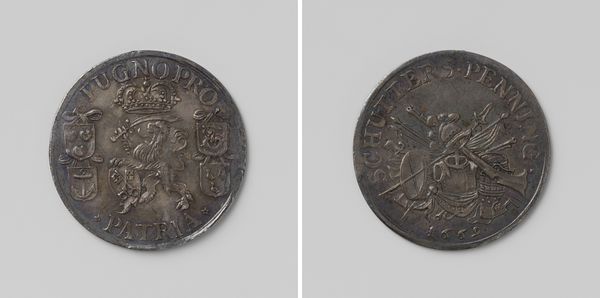
print, metal, relief, engraving
#
portrait
# print
#
metal
#
relief
#
11_renaissance
#
history-painting
#
engraving
Dimensions: diameter 2.9 cm, weight 47 gr
Copyright: Rijks Museum: Open Domain
Curator: Look at this print, crafted around 1561 by an anonymous hand. It depicts Philip II and Isabella, the King and Queen of Spain. This example resides here with us at the Rijksmuseum. The artist used an engraving technique to create these portraits in metal relief. What strikes you initially about this piece? Editor: Well, my first thought goes to how formal and, frankly, distant the royal couple appear. It seems more about conveying their status than capturing any real sense of personality or intimacy. Their faces feel rather set, almost like masks. Curator: That’s a sharp observation. Indeed, in this era, royal portraiture functioned as a carefully constructed projection of power. Consider how images of rulers were used to shape public perception and legitimize their rule, especially during a period marked by political and religious upheaval across Europe. It is interesting to note that Philip and Isabella married later in life in 1559 and it appears the engraving happened a few years later. Editor: The presence of metal in the material of the prints themselves really contributes to that feeling of power as well. What significance can we pull from this, do you think? Curator: I suspect that choosing metal was no accident. Metal, then as now, implies permanence, value, and importance, characteristics they wished to exude and ascribe to their image. A reminder of their control, both economically and militarily. But tell me, do you notice any symbols or imagery, aside from their regalia, that speak to the period or their reign? Editor: All of those heraldic fleur-de-lis feel pretty direct as a display of authority and family connection, right? They immediately link Isabella back to French royalty. More subtly, though, I wonder about the stark profile views; they emphasize their separation as much as their shared rule. Curator: That’s insightful. Profiles lend themselves to coinage and official documents of this era, suggesting steadfastness but, perhaps unintentionally, a certain coldness, too. It's interesting how the medium shapes our reception of them. These were strategic considerations for representing a monarchy navigating a volatile world, relying on symbolism that was deeply understood. Editor: It all creates an almost impenetrable barrier of royal symbolism! Knowing the history adds so much to seeing them beyond the faces on a coin. Curator: Precisely. Viewing these artworks through their historical role reveals why they projected themselves this way in such troubled times. Editor: And looking at these engravings through the language of imagery illuminates the tools rulers employed to project influence. Food for thought.
Comments
No comments
Be the first to comment and join the conversation on the ultimate creative platform.
